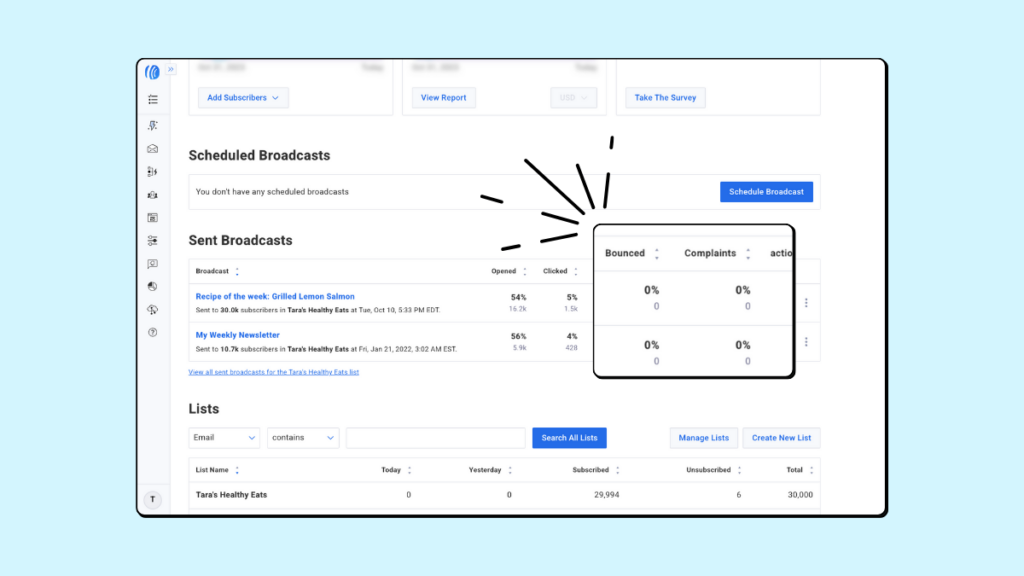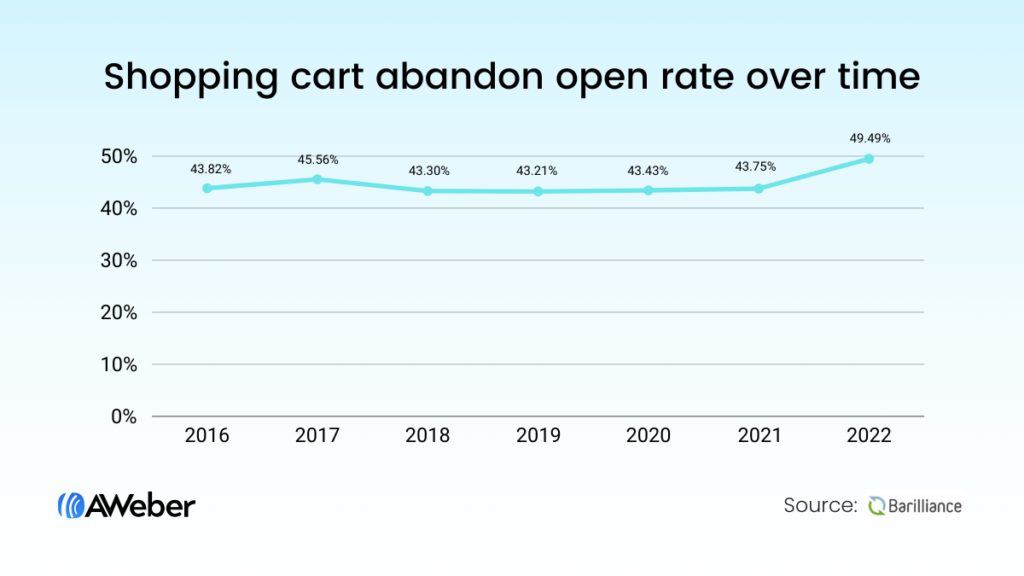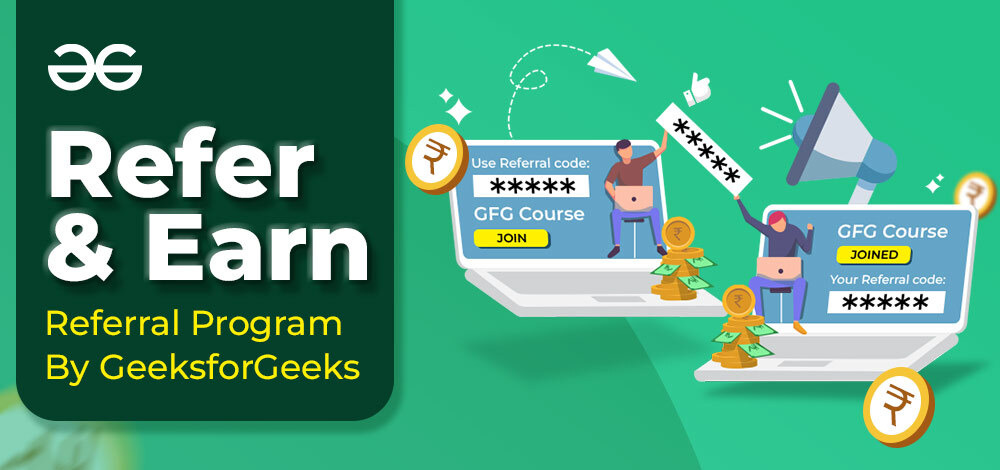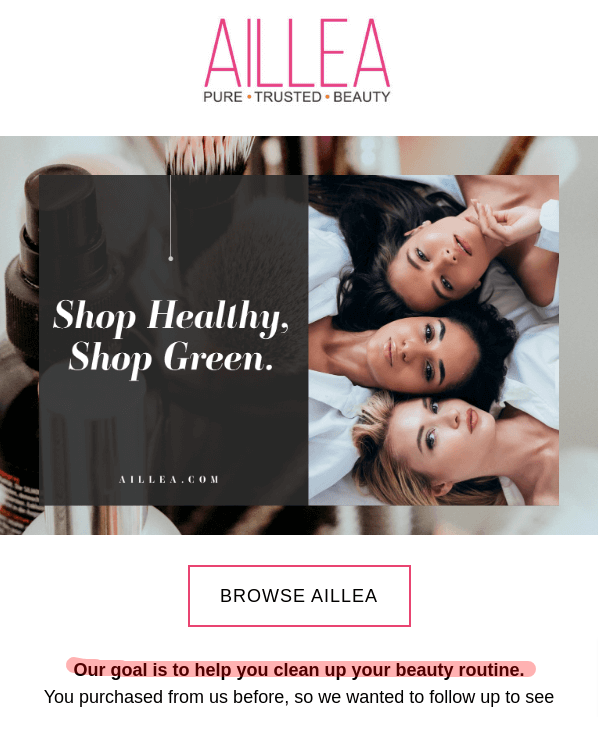Whether consumers are laughing at their favorite brand’s infotainment content, buying products through live shopping or tuning into a try-on haul, social media is a daily staple in their lives. In The Sprout Social Index™, we found 54% of consumers say their social media usage has been higher over the last two years than the previous two years.
With more people flocking to networks than ever before, social media and consumer behavior have evolved in lockstep, so understanding how to reach your target audience remains a necessity.
In this article, we’ll discuss the top six ways social media influences consumer behavior and what each means for your brand’s social strategy.
1. Consumers buy directly from social
Index data shows the top reason consumers follow brands on social media is to stay informed about new products/services, followed by getting access to exclusive deals and promotions.
But why is social commerce so popular? One reason is that it meets consumers where they already are. According to data from McKinsey, the majority of consumers use at least three channels for each purchase journey. For many, checking Facebook, Instagram or TikTok daily—whether they’re casually scrolling or searching for new products—has become as routine as brushing their teeth.
Networks continue to experiment with and formalize ecommerce capabilities to bring convenience to consumers and present brands with new revenue streams. For example, TikTok Shop launched in September 2023, enabling users to find and shop for items even more easily.
US annual social commerce sales per buyer are projected to double from $628 million to $1.224 billion in 2027, based on a forecast from Insider Intelligence.
How you can use this insight
Social commerce makes it infinitely easier for brands to deliver the seamless purchase experience buyers want. You can turn a casual scroller into a new customer in a couple of clicks. For example, if you’re a retail business and a holiday is coming up, you can create a shoppable Facebook ad or offer a limited time offer using Instagram Shops for your seasonal product lines.
If you’re not already, look into what social commerce functionality is available on the channels your audience spends the most time on. From TikTok to YouTube livestream shopping, there is a growing number of ways to connect with ready-to-buy consumers.
If you’re a Sprout user, take advantage of our integrations with Shopify and Facebook Shops by connecting your product catalogs with our platform—you can quickly add product links in your outbound posts and customer replies.

2. Consumers expect two-way engagement with brands
Social media adds another dimension to the brand-customer relationship. A brand is no longer a remote, faceless entity that we only learn about in publications, press releases or Google searches. Looking at a brand’s social networks helps you gauge their values, relevant news and offerings, and how they relate to their audience.
Social lets consumers engage and interact with businesses in a multitude of ways, from liking posts and following their accounts to sharing brand-related content, shouting out brand love or asking product questions. And of course, social shopping makes conversions faster.
Don’t be too shy to engage with your audience, jump on relevant trends, ask questions or run polls and Q&As. And don’t forget to respond to direct messages, comments and @-mentions.
The Index found 51% of consumers said the most memorable brands on social respond to customers. Across all age groups, consumers want to know they’re being heard.
Brand authenticity will drive a customer to choose you over a competitor—and stick with you. This means upholding your organization’s claimed values, listening to your audience, discussing what matters to them, anticipating their needs and delivering on the promises you make.
How you can use this insight
Engagement happens perpetually across multiple channels and formats. With a tool like Sprout’s Smart Inbox, you can set up rules to automatically tag and categorize inbound messages so you never miss an opportunity to engage.
Analyze trends and patterns across these conversations to gain a deeper understanding of your customers. What’s delightful and what’s frustrating them? What are they praising, and what are they criticizing? What are they sharing about your brand and your competitors with their own audiences?
Of course, brands should address complaints and negative inbound messages, but tools like Sprout can help brands get the answers to these questions so they can proactively engage versus reactively. For example, with social listening, you can uncover opportunities to surprise and delight your customers.
Elicit and listen to feedback and share it with your organization. Channel this feedback to your colleagues across the business from sales and marketing to product and operations to deliver more tailored customer experiences in the future.
3. Consumers turn to social media for customer service
The evolution of social media and consumer behavior has transformed customer service interactions. Before social, consumers could expect to interact with a brand by calling, emailing or visiting locations in person—complete with the infamous wait times to talk to a representative. Today, social is consumers’ preferred choice for sharing feedback and reaching out with a customer support issue or question.
The days of long telephone hold times punctuated by elevator music are dwindling. Consumers with a product question or order issue are much more inclined to reach out via a brand’s Facebook page, X (formerly known as Twitter) @-mention or Instagram direct message. But social media moves fast, which means customers expect faster answers.
Index data shows customer service isn’t just about responding quickly either. Although 76% of consumers value how quickly a brand can respond to their needs, 70% expect a company to provide personalized responses to customer service needs.
Regardless of whether it’s a busy season, customer service teams may already be spread thin or lack resources, which can result in missed messages, slower responses and suboptimal replies. Prevent frustration, reduce delays and improve communication by evolving your approach to social customer service.
Social customer care starts even before a customer reaches out to you. It means getting a clear understanding of what your customer wants from you, reducing room for error and building long-term relationships with your audience.
How you can use this insight
How can you create and maintain a social customer care strategy? Start by making it easy for customers to find you. Include relevant contact info on your organization’s social media profiles and bios. Make sure you’re monitoring Meta Messenger and direct messages on X, Instagram or TikTok (or consider recruiting a chatbot’s help) if that’s the communication channel your customers flock to most.
If your business has dedicated teams for social media and customer care, collaboration across departments is a must. Implementing a social customer relationship management (CRM) tool gives you a single source of truth to provide customer service while getting a more holistic view of customer behavior.
Another critical step is proactive message management. If a customer feels like they’re being ignored, they’ll move on to a more attentive competitor. Do you have ways to centralize inbound support messages across different social networks? Can your social customer care agents easily access important client information via CRM or help desk integrations? Do you have an efficient process for approving replies to customer questions on social?
If you answered “no” to any of these, don’t be afraid to turn to tools like Sprout to help your team work smarter and build stronger customer relationships.
4. Consumers demand authenticity in the age of AI
Index data shows authentic, non-promotional posts are ranked as the number one content type consumers don’t see enough of from brands on social. However, with limited bandwidth and resources, it can be difficult to consistently produce authentic, creative content at scale. Enter: artificial intelligence (AI).
And although 81% of marketers say AI has already had a positive impact on their work, consumers aren’t as eager to jump onto this technology wave. Over a third (42%) of consumers say they are slightly or very apprehensive about the use of AI in social media interactions.

How you can use this insight
So how does this impact your brand’s content strategy? Consider pulling back on trendjacking and prioritizing original content that’s true to your brand.
Shaping genuine connections and building community can’t be replicated by machines alone, but adding that golden human touch requires time. Leverage AI to handle manual, time-consuming tasks like social media reporting. If you use AI to create spreadsheets and reports, marketers can focus their energy and efforts into developing more impactful content and engagement strategies. Research and identify where to incorporate AI across your teams’ tasks and workflows.
5. Consumers want more transparency and less performative activism
A few years ago, consumers wanted brands to take a stand on important causes. The latest Index shows only 25% of consumers think brands must speak out on causes and news relevant to their values to be memorable on social.
Consumers want brands to share more about their business values and practices, and how their products are made/sourced—but they aren’t necessarily looking for them to “take a stand” on larger issues. Due to the rise of performative activism, some efforts read as disingenuous and inauthentic. In other words, consumers don’t just want brands to talk about their values, they must walk the walk too.

How you can use this insight
This slight shift in consumer behavior is an opportunity for social teams to collaborate with colleagues beyond marketing. Work to develop messaging around your company’s supply chain, operations, labor practices and culture that will resonate on social. Consider featuring more employees in your social content such as a behind-the-scenes series, or connect with C-suite executives to refine their social presence and thought leadership on platforms like LinkedIn. And to amplify those efforts even more, implement employee advocacy into your content strategy.
6. Consumers are heavily influenced by social media reviews
Social media is a living document for social proof—which is increasingly a make-or-break factor for buying decisions.
Data from the Yale Center for Customer Insights shows almost 90% of`consumers trust online reviews as much as they trust personal recommendations. And half of consumers 18-54 look for online reviews before deciding to visit a local business.
Even the most dazzling, high-budget television ads can’t always deliver what social media offers for free: authenticity. Consumers take to channels like X and review hubs like Yelp and Google Reviews to praise, champion and criticize different products and businesses. Buyers are more likely to trust this unfiltered peer feedback from people who have already tried a product or engaged with a brand.
From a brand perspective, reviews are key for audience growth and reputation management. Every review post, comment and @-mention is either an opportunity to reflect on ways your business can improve—or a glowing testimonial worth sharing more broadly with your audience.
How you can use this insight
Online review management is tricky, but it’s a must for maintaining a positive reputation. It’s hard to distill review data from disparate sources into a quantifiable metric. With a social listening tool like Sprout’s, you can easily analyze the sentiment of messages that mention your brand so you can dig into positive, neutral and negative feedback.
Sprout’s review management capabilities ensure you never miss a message (or a chance to engage) by centralizing reviews from Facebook, Glassdoor, Google My Business, TripAdvisor, Yelp, Google Play Store and Apple App Store in one place.
You can also conduct sentiment analysis in Sprout’s Smart Inbox and Reviews feed. Sprout will automatically assign sentiment to messages in your Smart Inbox and Reviews, but you can dig in further by adding filters and custom views.
Social media and consumer behavior: An ongoing transformation
Social media leveled the playing field between buyers and brands. Consumers can learn about and engage with brands more easily, and vice versa. Brands can listen to what matters to their audience at the most individual level and help solve problems faster.
Thanks to social, consumers expect much more from the businesses they support. With the right tools, organizations of any size can rise to the challenge.
Looking to learn more about social media and consumer behavior and the right next steps? Learn more data insights in The Sprout Social Index™.
The post 6 ways social media impacts consumer behavior appeared first on Sprout Social.
from Sprout Social https://ift.tt/InJ2fVM
via IFTTT























































